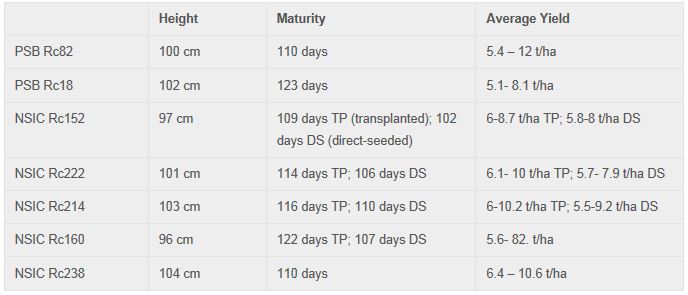The Philippines
July 21, 2016

Poor to zero germination of sown seeds is one of the major problems of farmers who practice direct wet seeding during rainy season.
Experts at the Plant Breeding and Biotechnology Division of PhilRice are working on a study titled Germination under water: Wanted trait for direct wet-seeded rice to solve this problem by identifying breeding lines with high anaerobic germination rate.
Anaerobic germination is the ability of the rice seeds to survive and grow under flooded or submerged conditions, or with less oxygen.
According to Dr. Norvie Manigbas, 122 breeding lines were tested and submerged under 5 cm water depth. Seedling survival was determined 14 days later by counting the germinated seedling over the number of seeds sown.
Out of the 122 entries tested, 27 entries have anaerobic germination resistance.
“Among the lines that exhibited resistance were NSCIC Rc152, Rc296, Rc290, Rc276, Rc190, Rc18, and Rc298, the first released variety for direct wet-seeding,” Manigbas said.
He added that other new breeding lines were also identified and exhibited higher germination rate than Rc298.
For ecosystems with erratic rainfall and flooded conditions, Manigbas recommends planting submergence-tolerant varieties such as PSB Rc68 and NSIC Rc194.
NSIC Rc194, popularly known as Submarino 1, has an average yield of 2.5 t/ha and matures in 125 days under submerged conditions. He also recommends varieties with less than 105 cm plant height, with lodging resistance, and stagnant flooding tolerance of 50 cm such as NSIC Rc222.
“This height is ideal as it will prevent the plants from lodging during floods and typhoons,” Manigbas explained.
Among the varieties our famers could choose from are the following:

For fertilizer application, Manigbas said that farmers need to apply less nitrogen and more phosphorus and potassium depending on soil analysis recommendation. These nutrients will help develop and strengthen the root system of the plants, and for grain development.
For irrigated areas, Manigbas suggests the alternate wetting and drying (AWD) method.
“The AWD will help the plants establish good root system thus preventing them from lodging when water rise is unavoidable,” he explained. AWD was proven to be efficient on water use without effect on yield.
For more information on rice farming tips during rainy season, farmers may call or text the PhilRice Text Center at 0920 911 1398. - See more at: http://www.philrice.gov.ph/underwater-germination-possible-study/#sthash.kl0SxF45.dpuf